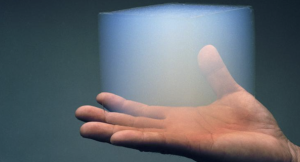AI-Enhanced ‘Frozen Smoke’ Sensors for VOC Detection
In the dynamic intersection of electrical engineering and environmental health, groundbreaking research is paving the way for a new era of innovation in sensor technology. In collaboration with Warwick University, a team from Cambridge University has engineered a remarkable sensor that embodies this pioneering spirit. Crafted from a material often referred to as ‘frozen smoke,’ this sensor employs artificial intelligence to detect traces of formaldehyde in the air with unparalleled sensitivity. This achievement represents a significant leap in indoor air quality monitoring. It signals a meaningful opportunity for electrical engineers and technologists poised at the forefront of developing solutions for environmental health challenges.

The essence of this breakthrough lies in the sensor’s construction from aerogels, materials celebrated for their extreme porosity and lightweight nature. The Cambridge team, led by Professor Tawfique Hasan of the Cambridge Graphene Centre, ingeniously manipulated the aerogels’ structure to detect formaldehyde at concentrations as minute as eight parts per billion. This level of sensitivity is not just impressive; it represents a significant advancement in our ability to monitor air quality with precision, particularly when it comes to volatile organic compounds (VOCs) that pose serious health risks even at low exposure levels.
This research opens up new avenues for innovation for electrical engineers and technologists focused on the cutting edge of sensor technology and environmental health. The sensors, requiring minimal power and capable of operating at room temperature, set a new standard for efficiency and practicality in environmental monitoring solutions. Moreover, incorporating machine learning algorithms into the sensors’ design enhances their selectivity, allowing for the distinction between various VOCs based on their unique ‘fingerprints.’
This technology’s potential extends far beyond the realm of formaldehyde detection. The same principles can be applied to create sensors capable of identifying a wide array of hazardous gases, broadening the scope of environmental monitoring and health-safeguarding applications. Such sensors could be miniaturized for wearable tech, offering real-time environmental health data directly to consumers or deployed in healthcare settings for more precise air quality management.

